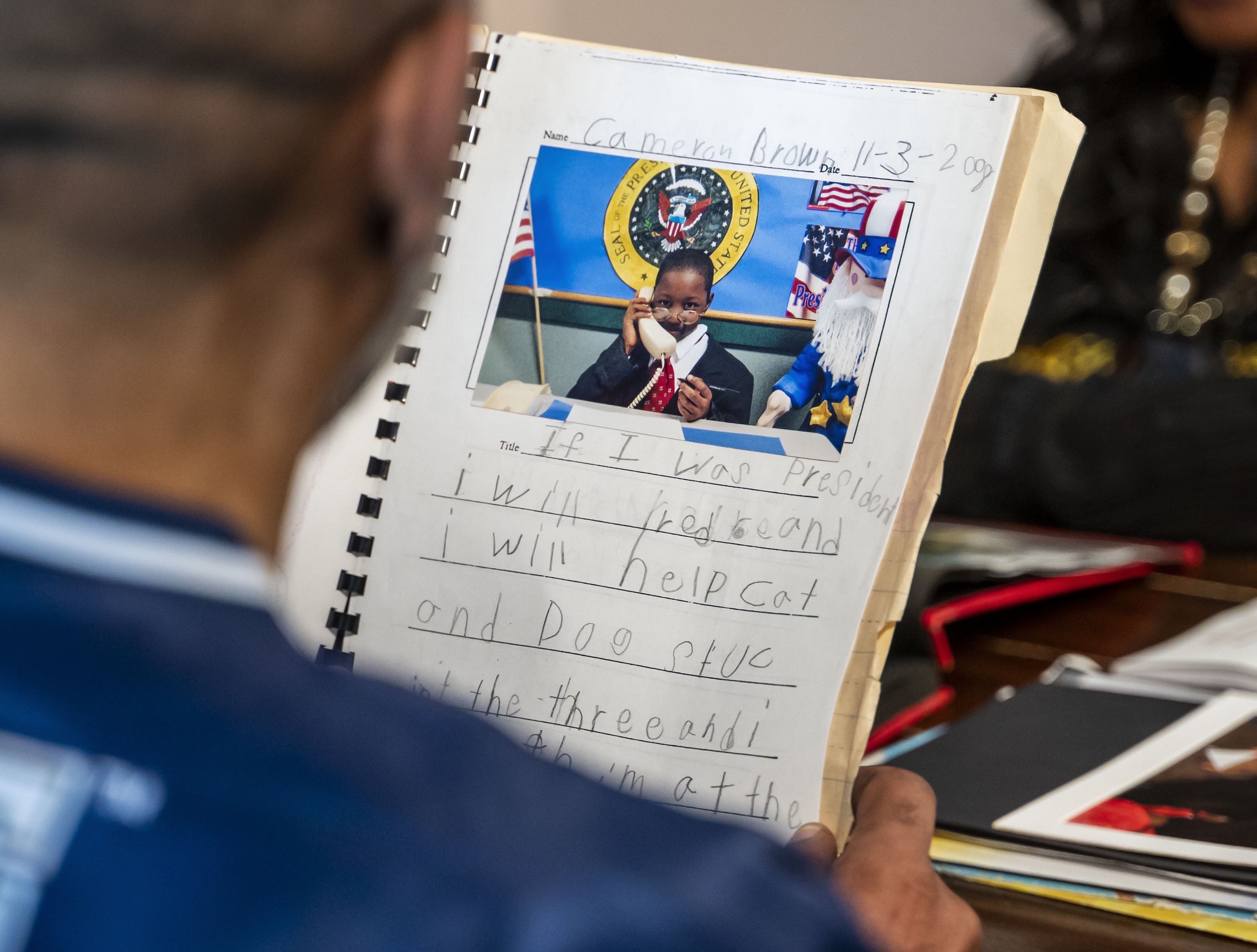Federal officials are cautioning state and local law enforcement against reselling their used guns to the public, saying the practice has sent tens of thousands of old police weapons into the hands of criminals.
The warning was the first in a series of recommendations made by the Bureau of Alcohol, Tobacco, Firearms and Explosives in its fourth and final installment of a multiyear gun trafficking assessment requested by President Joe Biden in 2021.
The latest report, released on January 8, comes after an investigation by The Trace, CBS News, and Reveal from The Center for Investigative Reporting found that more than 52,000 former police guns had resurfaced at crime scenes over the past two decades — a pipeline fueled in part by the widespread practice of selling used guns back to firearms dealers for discounts on new equipment.
Some of these resold weapons were tied to drug arrests, domestic violence incidents, and shootings, including the killing of an Indianapolis teenager. Our reporting prompted the Minneapolis and Indianapolis police departments to stop reselling guns.
In its report, the ATF warned about the potential dangers of reintroducing used police guns to the marketplace and urged law enforcement agencies to consider the possible consequences before deciding to resell.
“The data show that some of the firearms put back into the public market are used to commit additional crimes,” ATF spokesperson Kristina Mastropasqua said. “This is not the leading source of crime guns, but it is one source. The goal of the report is that state and local policy makers will be able to use the best data available to make future decisions.”

More than 25,000 firearms used in crimes between 2019 and 2023 previously belonged to police, according to the report. That includes not only resold service weapons but also guns that were seized as evidence or stolen from officers. Roughly 4 percent of those guns — more than 1,000 — turned up in homicides. Another 9 percent, roughly 2,200 guns, were confiscated from convicted felons.
The numbers are likely an undercount: The figures depend on law enforcement agencies tracing guns that they recover at crime scenes. Only around 55 percent actually do, the report says.
A 2021 investigation from The Trace highlighted the extent of this problem in California, showing that in the preceding decade, police departments in the state had failed to flag more than 90,000 crime guns for tracing. According to the ATF report, California was the leading source of former police guns later used in crimes.
While former police guns represented just a fraction of the nation’s crime guns — a little over 1 percent of all guns traced — they were significantly more likely to be discovered with young people and slightly more likely to wind up in violent crimes, the report shows.
Each of the agency’s four trafficking reports has concentrated on a different facet of the nation’s gun violence crisis. The first installment traced how the United States has become awash in guns. The second shared troves of crime gun recovery data previously hidden from public view, and the third detailed the results of more than 10,000 firearms trafficking investigations from 2017 to 2021.
The latest report updates the agency’s previous analyses and sheds new light on trafficking over the border into Mexico. Some of its other key findings:
- At least 36 percent of all guns traced by Mexican authorities between 2022 and 2023 were originally purchased in the United States. More than two-thirds of those guns — almost 14,000 — were bought in the four Southwest border states: California, Arizona, New Mexico, and Texas.
- Police recovered more than 27,000 homemade, untraceable ghost guns in 2023 — the highest number on record. But the year-over-year increase in recoveries (up less than one percent from 2022) is by far the smallest on record, suggesting that new federal regulations on the kits used to build ghost guns may be having an effect.
- Gun dealers lost or otherwise got rid of more than 72,000 guns without a record of their sale or disposal between 2016 and 2023. That is more guns than were reported stolen from gun dealers during the same period.
To reduce gun trafficking, the ATF also recommended enhancing the background check system for gun sales and expanding the use of digital tools for tracing shell casings and guns recovered at crime scenes.

